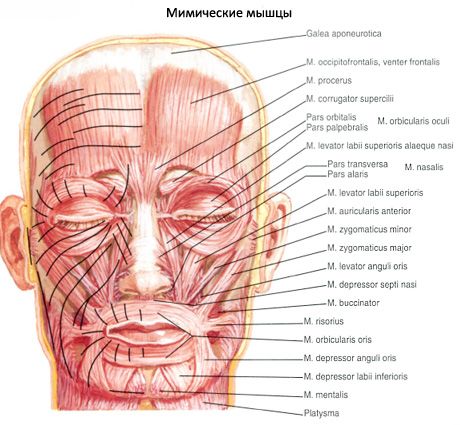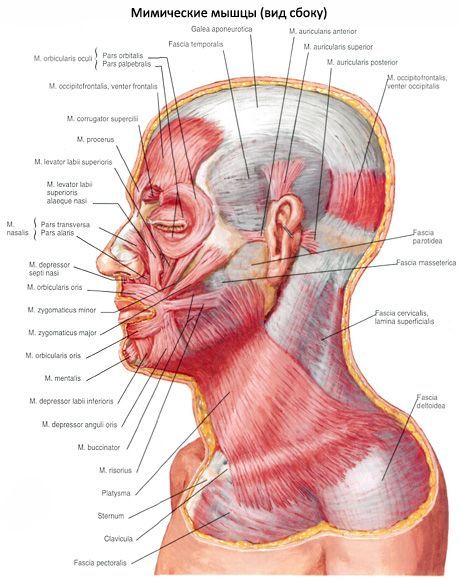Medical expert of the article
New publications
Mimic muscles
Last reviewed: 04.07.2025

All iLive content is medically reviewed or fact checked to ensure as much factual accuracy as possible.
We have strict sourcing guidelines and only link to reputable media sites, academic research institutions and, whenever possible, medically peer reviewed studies. Note that the numbers in parentheses ([1], [2], etc.) are clickable links to these studies.
If you feel that any of our content is inaccurate, out-of-date, or otherwise questionable, please select it and press Ctrl + Enter.
According to their location (topography), the facial muscles (mimic) are divided into the muscles of the cranial vault; muscles surrounding the eye slit; muscles surrounding the nasal openings (nostrils); muscles surrounding the mouth opening and muscles of the auricle.


Muscles of the cranial vault
The cranial vault is covered by a single muscular-anoneurotic formation - the epicranial muscle (m.epicranius), in which the following parts are distinguished:
- occipitofrontalis muscle;
- tendon helmet (supracranial aponeurosis);
- temporoparietal muscle.
Muscles surrounding the palpebral fissure
The eye slit is surrounded by bundles of the orbicularis oculi muscle, which has several parts.
Muscles surrounding the palpebral fissure
Muscles surrounding the nasal openings
In the area of the nasal openings there are several small, poorly developed muscles that expand or narrow these openings. These are the nasal muscle and the muscle that lowers the nasal septum.
Muscles surrounding the nasal openings
Muscles surrounding the mouth opening
There are several well-defined muscles around the mouth opening. These muscles include the orbicularis oris, the depressor anguli oris, the depressor labii inferioris, the mentalis and buccinator muscles, the levator labii superioris, the zygomaticus minor and major, the levator anguli oris, and the laughter muscle.
Muscles surrounding the mouth opening
Muscles of the auricle
The muscles of the auricle in humans are poorly developed. The ability to move the auricle is very rare, which is combined with the simultaneous contraction of the occipitofrontal muscle. There are anterior, superior and posterior auricular muscles.


 [
[